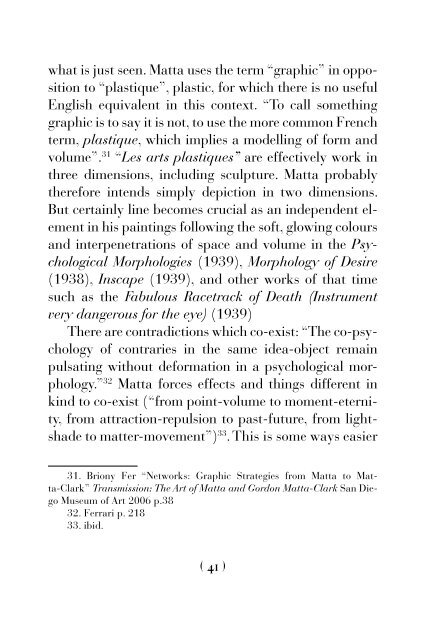Matta-Duchamp
Illustrated catalog featuring full page color illustrations and rare documentary photographs. Published by Galerie Gmurzynska in June 2018 to accompany a special cabinet exhibition at Art Basel 2018. The book includes texts by Professor Dawn Adès and Norman Rosenthal. It coincides with a broader re-evaluation of the importance of Matta internationally as well as of the influence of Duchamp on the work of 20th century artists. Edited and introduced by Krystyna Gmurzynska and Mathias Rastorfer. Essays by Dawn Adès and Norman Rosenthal. Historic interview excerpt by Robert Motherwell. 90 pages with 7 illustrations. Softcover. ISBN: 978-3-905792-09-6
Illustrated catalog featuring full page color illustrations and rare documentary photographs.
Published by Galerie Gmurzynska in June 2018 to accompany a special cabinet exhibition at Art Basel 2018. The book includes texts by Professor Dawn Adès and Norman Rosenthal. It coincides with a broader re-evaluation of the importance of Matta internationally as well as of the influence of Duchamp on the work of 20th century artists.
Edited and introduced by Krystyna Gmurzynska and Mathias Rastorfer.
Essays by Dawn Adès and Norman Rosenthal.
Historic interview excerpt by Robert Motherwell.
90 pages with 7 illustrations.
Softcover.
ISBN:
978-3-905792-09-6
Create successful ePaper yourself
Turn your PDF publications into a flip-book with our unique Google optimized e-Paper software.
what is just seen. <strong>Matta</strong> uses the term “graphic” in opposition<br />
to “plastique”, plastic, for which there is no useful<br />
English equivalent in this context. “To call something<br />
graphic is to say it is not, to use the more common French<br />
term, plastique, which implies a modelling of form and<br />
volume”. 31 “Les arts plastiques” are effectively work in<br />
three dimensions, including sculpture. <strong>Matta</strong> probably<br />
therefore intends simply depiction in two dimensions.<br />
But certainly line becomes crucial as an independent element<br />
in his paintings following the soft, glowing colours<br />
and interpenetrations of space and volume in the Psychological<br />
Morphologies (1939), Morphology of Desire<br />
(1938), Inscape (1939), and other works of that time<br />
such as the Fabulous Racetrack of Death (Instrument<br />
very dangerous for the eye) (1939)<br />
There are contradictions which co-exist: “The co-psychology<br />
of contraries in the same idea-object remain<br />
pulsating without deformation in a psychological morphology.”<br />
32 <strong>Matta</strong> forces effects and things different in<br />
kind to co-exist (“from point-volume to moment-eternity,<br />
from attraction-repulsion to past-future, from lightshade<br />
to matter-movement”) 33 . This is some ways easier<br />
31. Briony Fer “Networks: Graphic Strategies from <strong>Matta</strong> to <strong>Matta</strong>-Clark”<br />
Transmission: The Art of <strong>Matta</strong> and Gordon <strong>Matta</strong>-Clark San Diego<br />
Museum of Art 2006 p.38<br />
32. Ferrari p. 218<br />
33. ibid.<br />
( 41 )

















